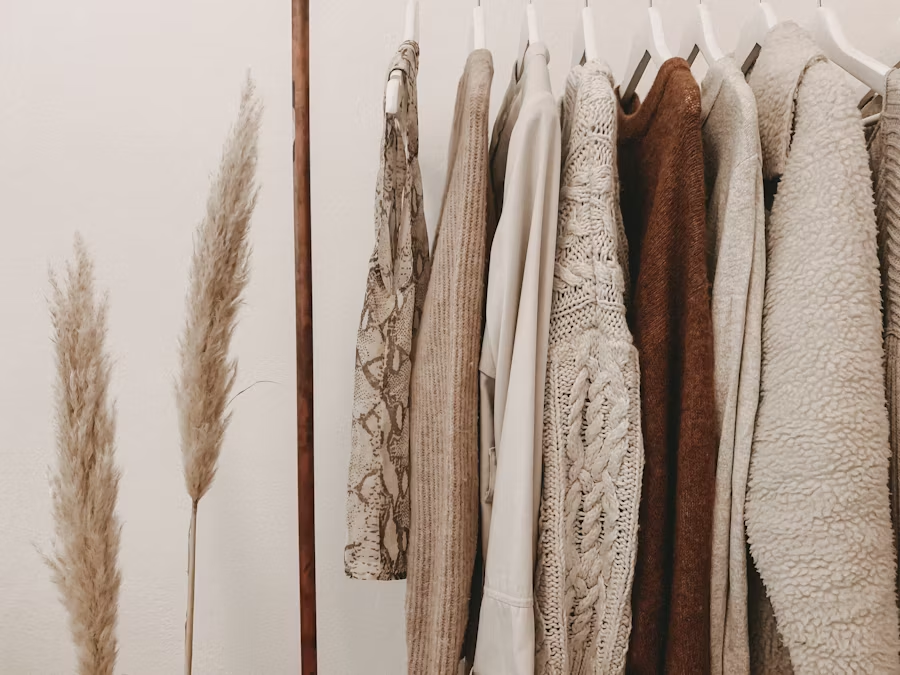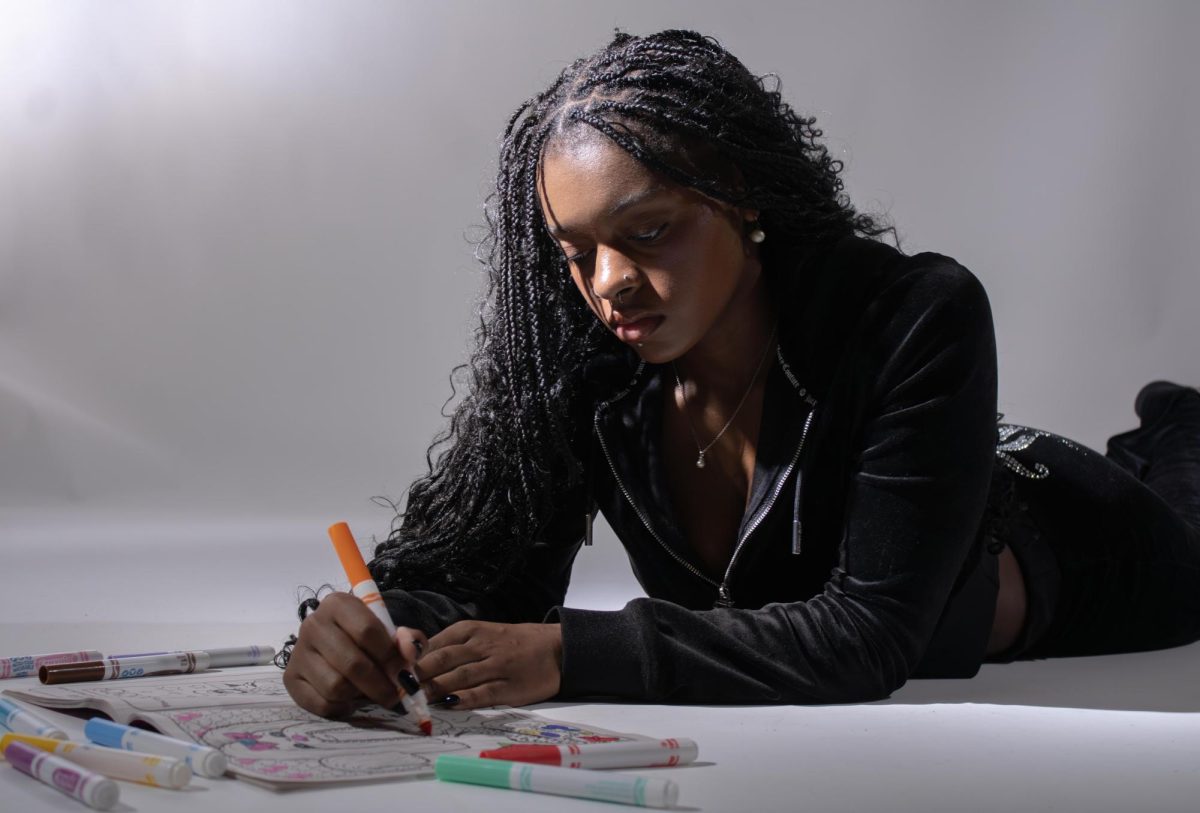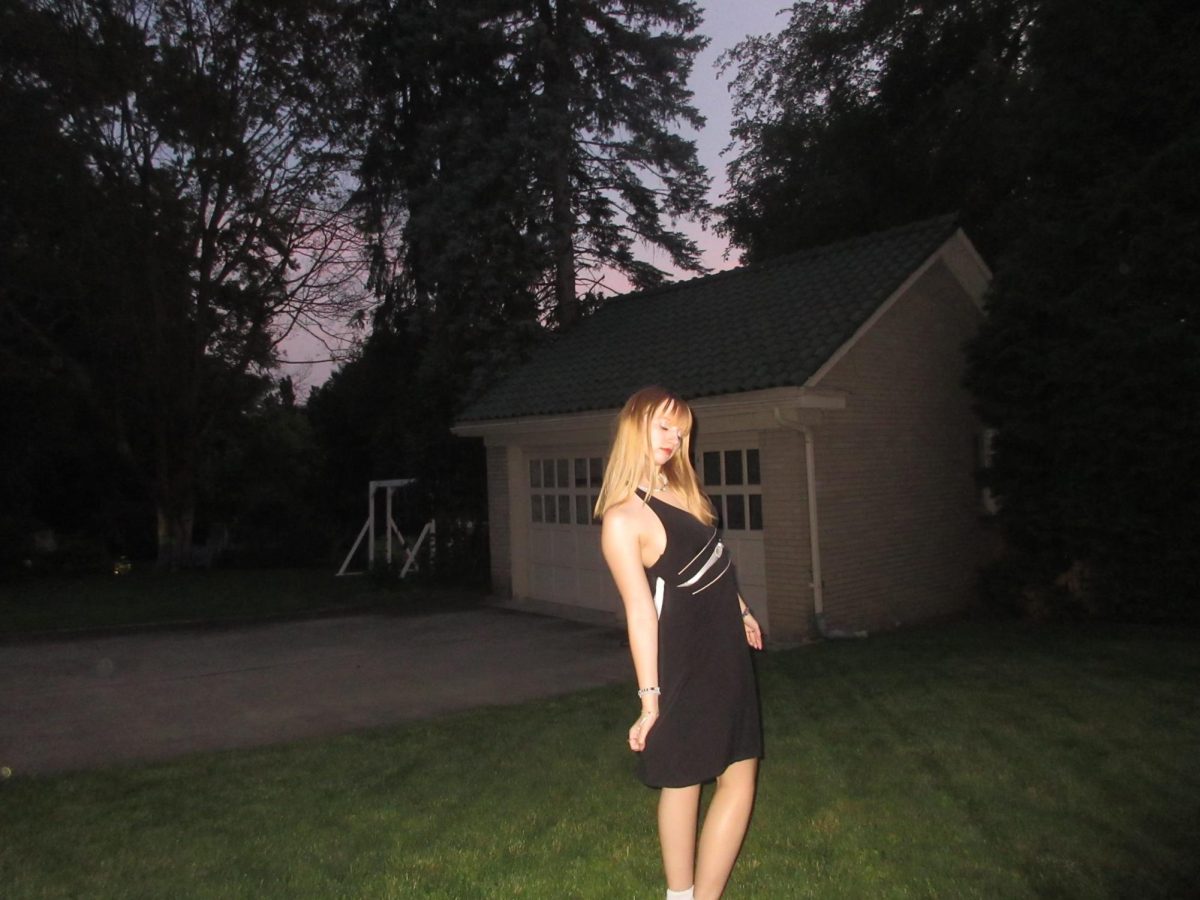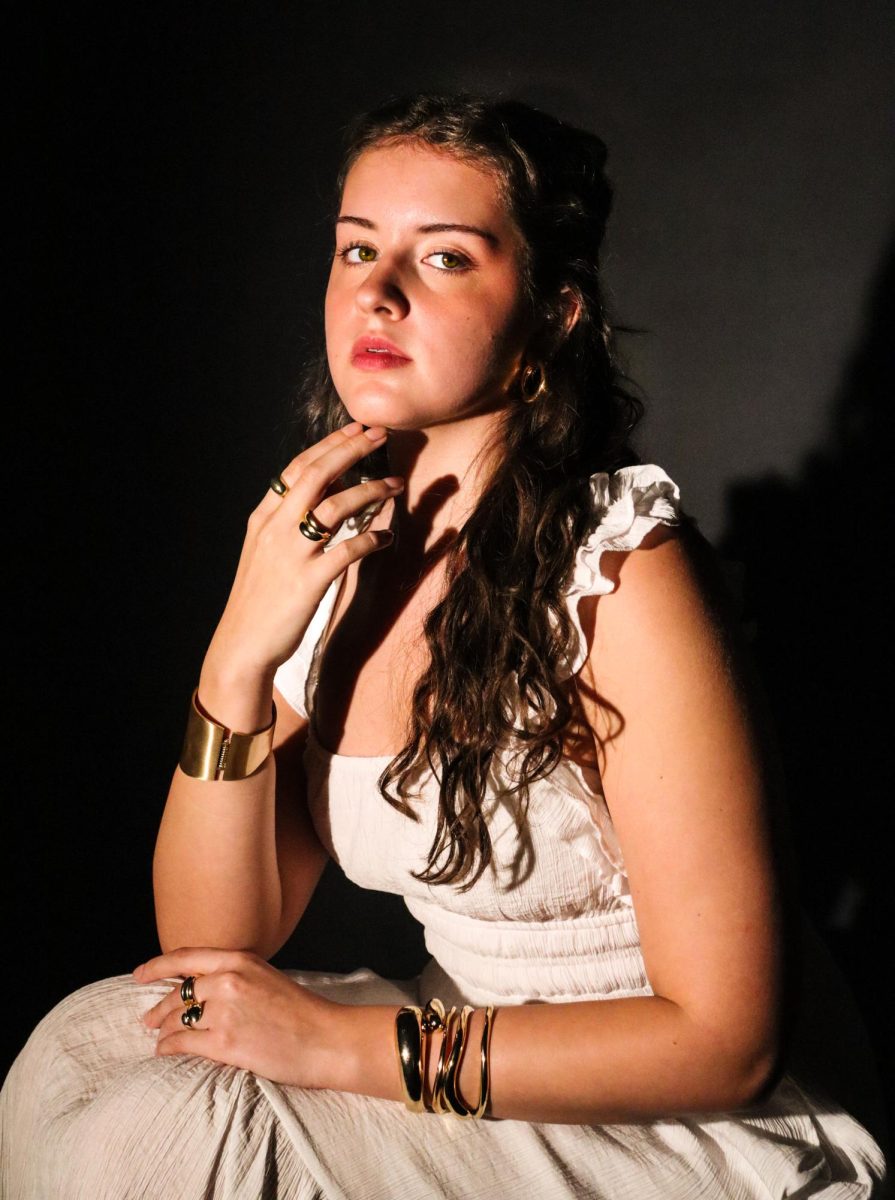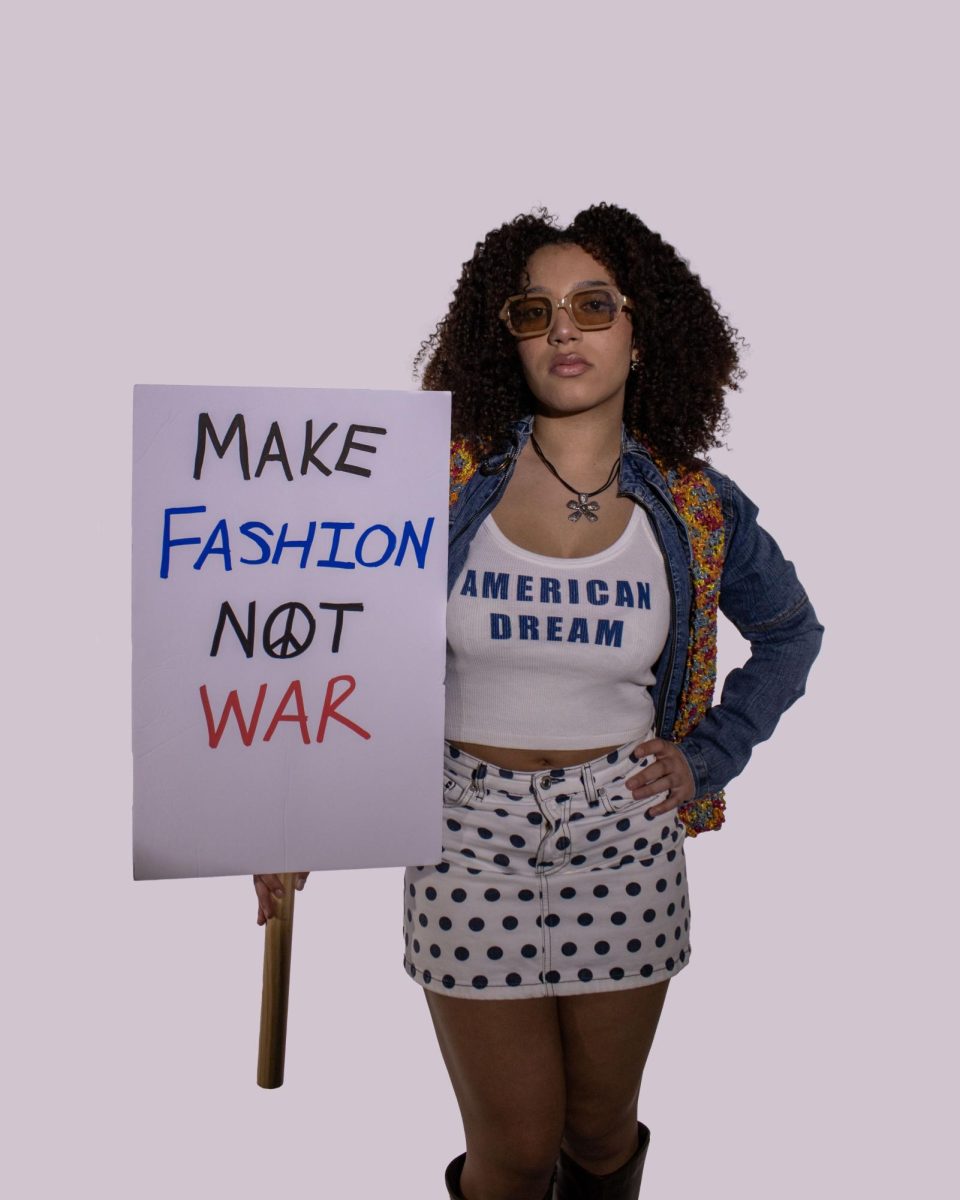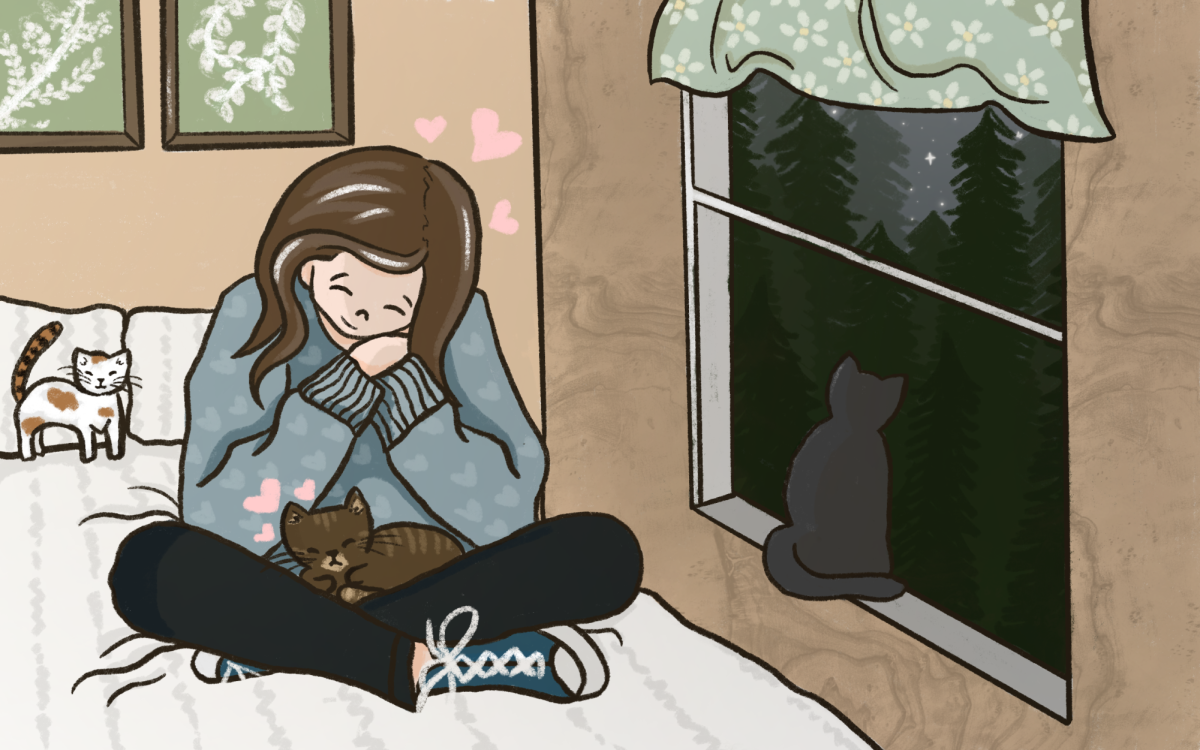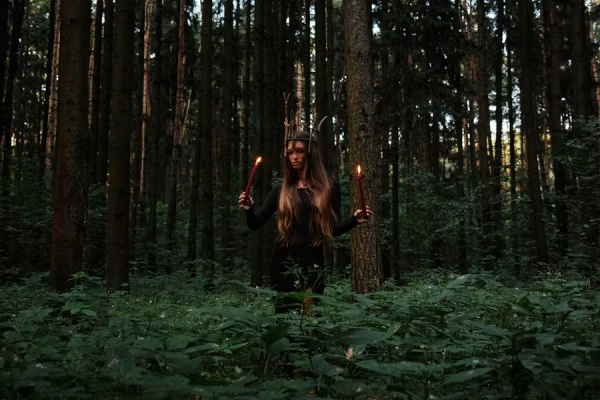
When you think of a witch what comes to mind? Glinda floating down in a bubble ready to help Dorothy down the Yellow Brick Road? The witches from “American Horror Story” Coven, parading the streets of New Orleans dressed head-to-toe in black? An older woman laboring over a cauldron filled with pasta like Tomie dePaola’s “Strega Nona?”
This question is what Dr. Susan Holt, women’s studies coordinator and professor, asked her students during the first day of Witches: The Monstrous Feminine to get the class to think of how the image of the witch impacts them.
Regardless of how witches are viewed, their place in culture has shifted over the years with the potential exonerating of those accused of witchcraft during the Salem Witch Trials. However, there is an otherness associated with them.
The earliest of witches were independent women, which caused others to be concerned about their freedom, said senior journalism major Chloe Robertson.
“A lot of the time witches are healers by themselves or women who didn’t have any type of relationship with a man or women who didn’t have children,” she said. “Because of that, especially during the society of that time, it was seen as weird, so they were kind of automatically outcasts.”
From being viewed as outcasts, these women were further labeled as witches and then viewed as others within their society, Robertson said.
The relationship between being an independent woman and then being labeled a witch brings up the importance of how individuals are targeted, Holt said.
“Something in you draws the eyes of the accusers to you, but all of those elements are going on, it’s just a question in any given case, what the exact relationship of those things is,” she said.
With the increased focus on witches with the creation of “Wicked” movies and the exoneration, those eyes have changed how they viewed the accused.
“We’re a different set of eyes, we certainly have a different set of people we’re looking at, even as we’re looking back to exonerate the women of the past,” Holt said.
By viewing certain individuals as others and not fitting in within one’s standard, the concept of othering can be used as a shortcut for people to fear or hate together, Holt said.
“The act of othering is the way of unifying the ones. If you’re the other, we’re the ones,” she said. “We found after 9/11, having a common enemy is a great unifier, so if you can successfully manage to pull off the feat of othering, you’ll also pull off the feat of coming together as a group that is against the enemy.”
Since witches have begun to be viewed differently, many have started to associate them with empowerment.
“The understandings of when a woman or a man was identified as a witch, they were a minority, but still, the assumption was that they had power, that’s what made them frightening” Holt said.
The idea of a woman having power caused more concern because of the uncertainty what she will do with her power, she said.
“There was this sense is that we had to deal with the witch was that she had power that she was going to use to harm and that power was not informed by good or by love, but by these darker energies and forces,” she said.
Grandy Hendrixs, author of “Witchcraft for Wayward Girls,” said in an email that people resonate with witches because they view witches as women with power.
“I think witches resonate with people who feel powerless. I think witches resonate with people who feel oppressed,” he said. “I think witches resonate with people who fear women, and I think witches resonate with people who think more people should fear women.”
A majority of those accused during the Salem Witch Trials were previously exonerated either during 1957 or prior; however, not all accused have received exoneration.
“I think it’s really important to stand up and take responsibility where we’re wrong as a country,” Grandy said.
During the late ‘60s, the W.I.T.C.H. Movement emerged as an American-based second wave radical feminism movement. Those a part of the movement dressed as witches and performed street theaters, known as zaps, where they hexed capitalism and the patriarchy.
“Witches are a powerful symbol because they’re the only supernatural creature consistently associated with women, and they’re taken up when they’re needed,” Hendricks said. “When times are hard, witches ride to the rescue, either physically or metaphorically.”
With the empowerment witches possess, they can be viewed as figures individuals look toward during political uncertainty, especially with abortion legislation.
“Maybe in this way, if you’re saying women are using the symbol of witch as a protest against certain things like what’s already against them,” said junior journalism major Savana Capp. “It’s a way to turn into a political thing on their own doing, so not the government or society.”
Hendrix pointed out how authors like Margaret Murray, Barbara Ehrenreich Deirde, Jules Michelet and Gerald Garnder made efforts to rewrite history turning those accused into “freedom fighters.”
“That’s been a really powerful change in how we look at accused witches and the witch trials, he said. “Scotland apologized to the witches they exonerated in 2022 and that matters. Taking responsibility for what we’ve done is important.”
Madi Karr, a sophomore studio art major, said the Salem Witch Trials are often talked about in American classes, so the exoneration of witches from those trials changes the narrative of those trials and how people will view witches.
“They were just accusing left and right, didn’t matter who it was, versus if you were to do it now, there’s a reason behind it,” they said. “Versus these people were just innocent women, who could do no wrong, they’re mothers, they’re wives.”
Riley Hudson, a senior communications major, viewed the exoneration as the patriarchy slowly diminishing. Since people will always attack women, recognizing how women were wronged is the first step to moving forward and validating them and their experiences.
“First, it was ‘we can’t just accuse women for being women, so we have to accuse them of something,’” she said. “I think that we see that a lot with politics as we talked about is the way female politicians get criticized is so much different than male politicians.”
Keeping in mind that individuals may still use the tactic to other individuals today, Grandy said witch hunts and trials are not a thing of the past.
“In 2023, the Taliban arrested about 200 accused witches in Afghanistan and many were sent to prison,” he said. “Today, 20,000 children in Kinshasa are homeless because they’re believed to be witches. Witch hunts and witch trials and witch persecutions are not a thing of the past.”
Support Student Media
Hi! I’m Hannah Planey, A Magazine’s editor-in-chief. My staff and I are committed to bringing you the most important and entertaining news from the realms of fashion, beauty and culture. We are full-time students and hard-working journalists. While we get support from the student media fee and earned revenue such as advertising, both of those continue to decline. Your generous gift of any amount will help enhance our student experience as we grow into working professionals. Please go here to donate to A Magazine.

